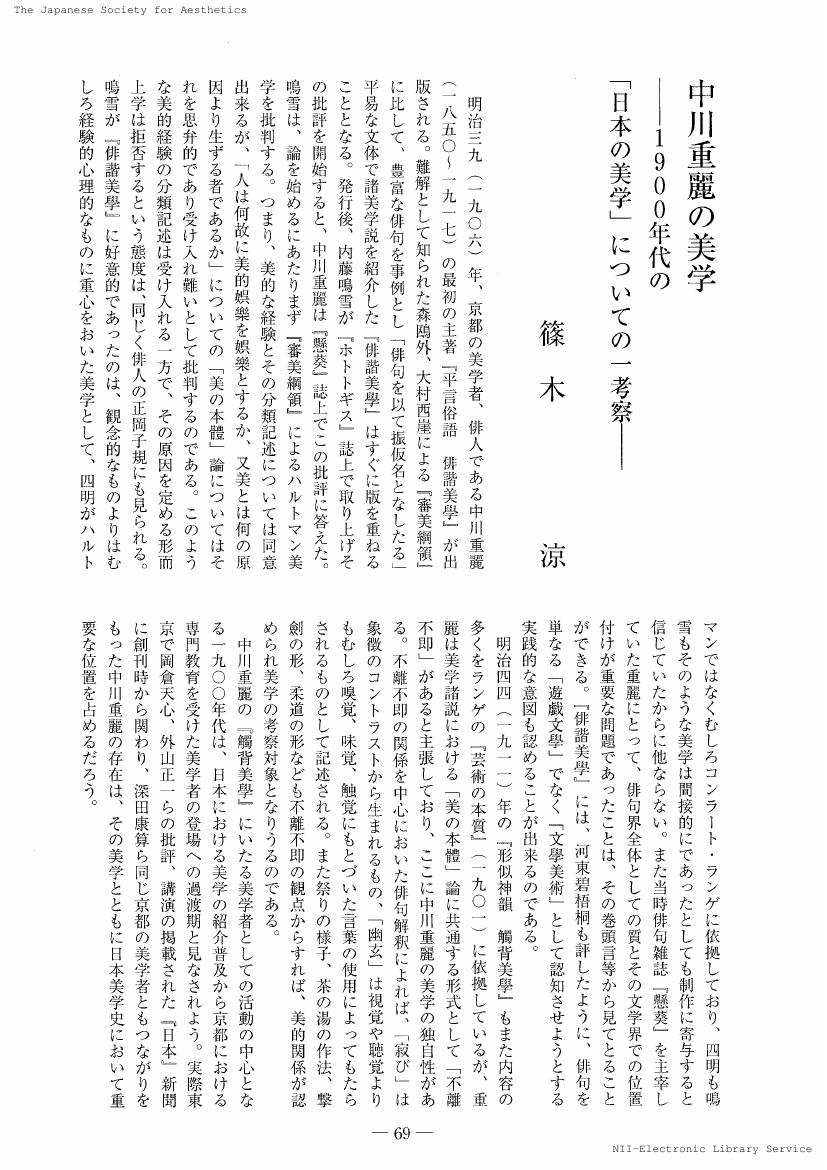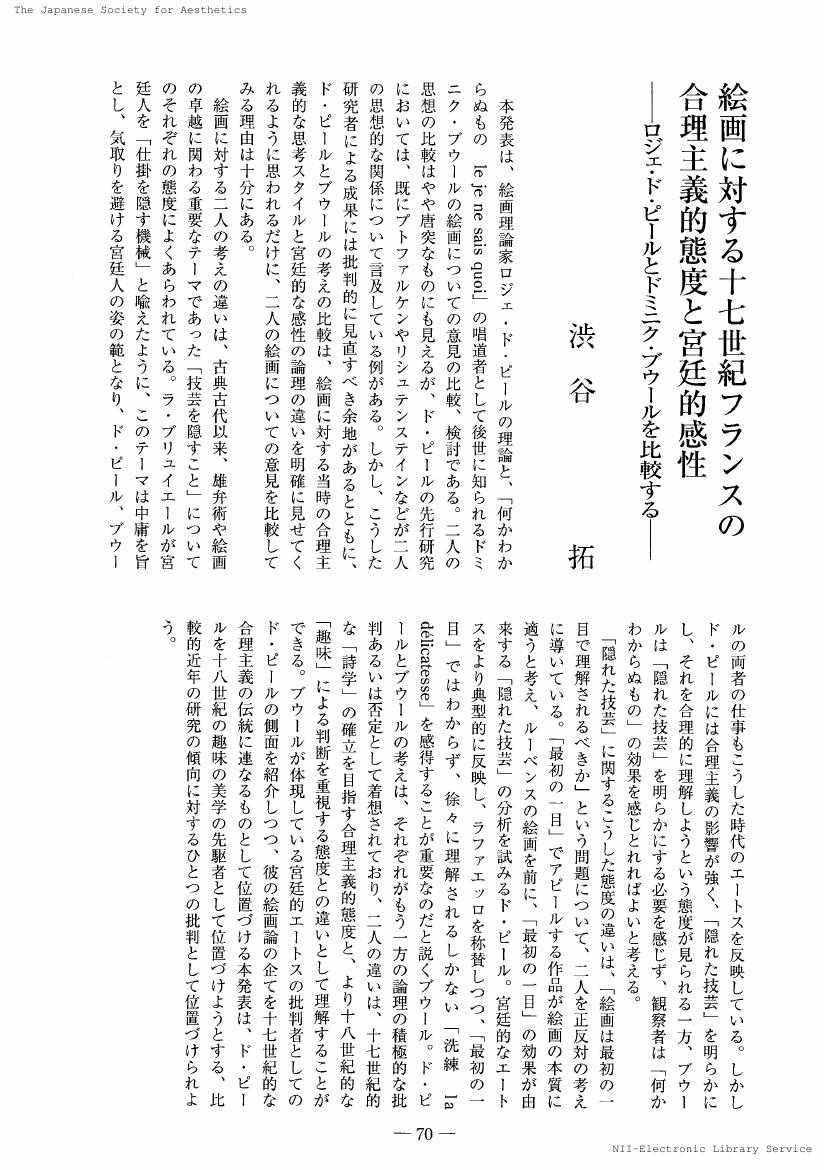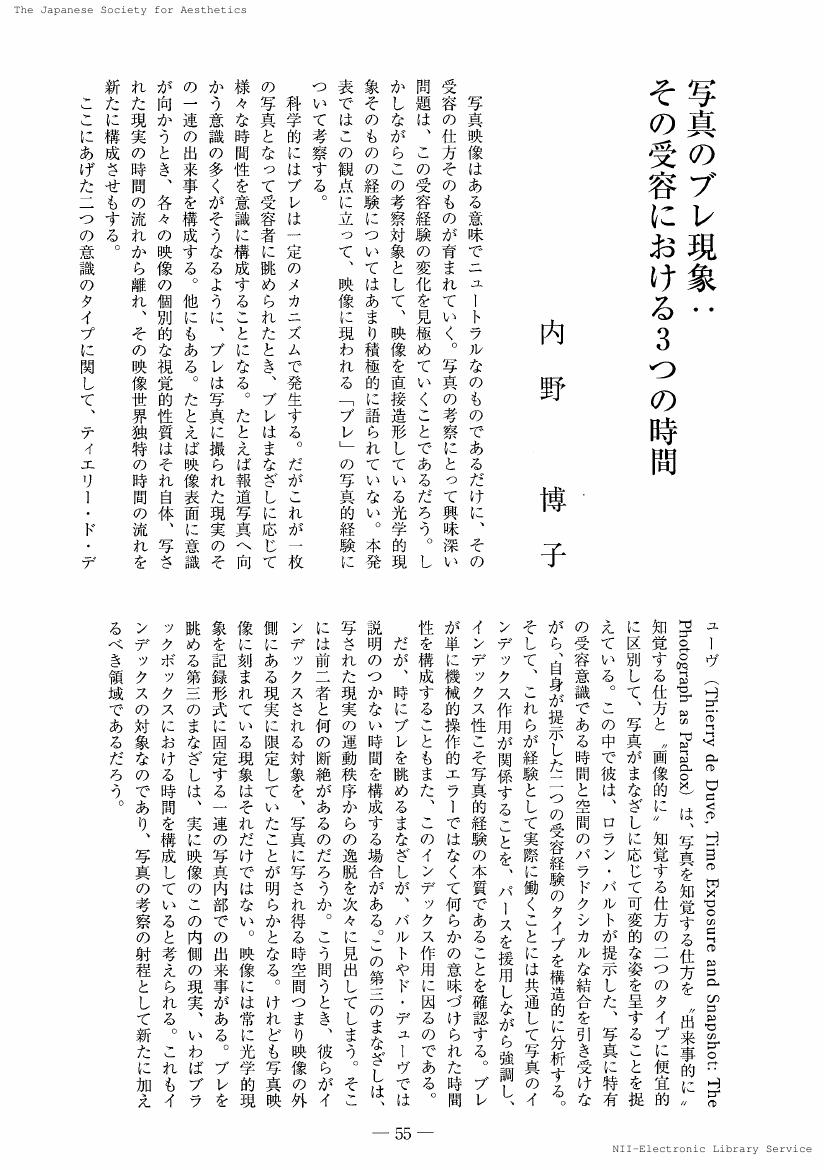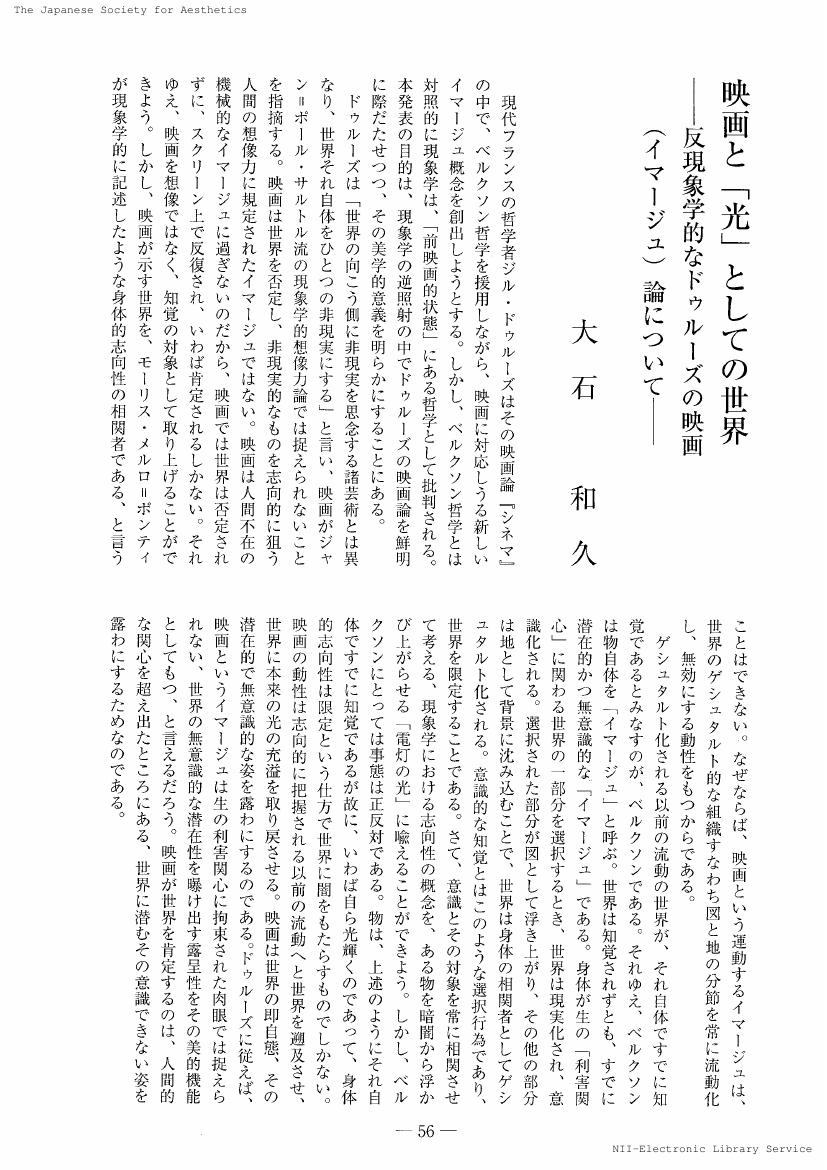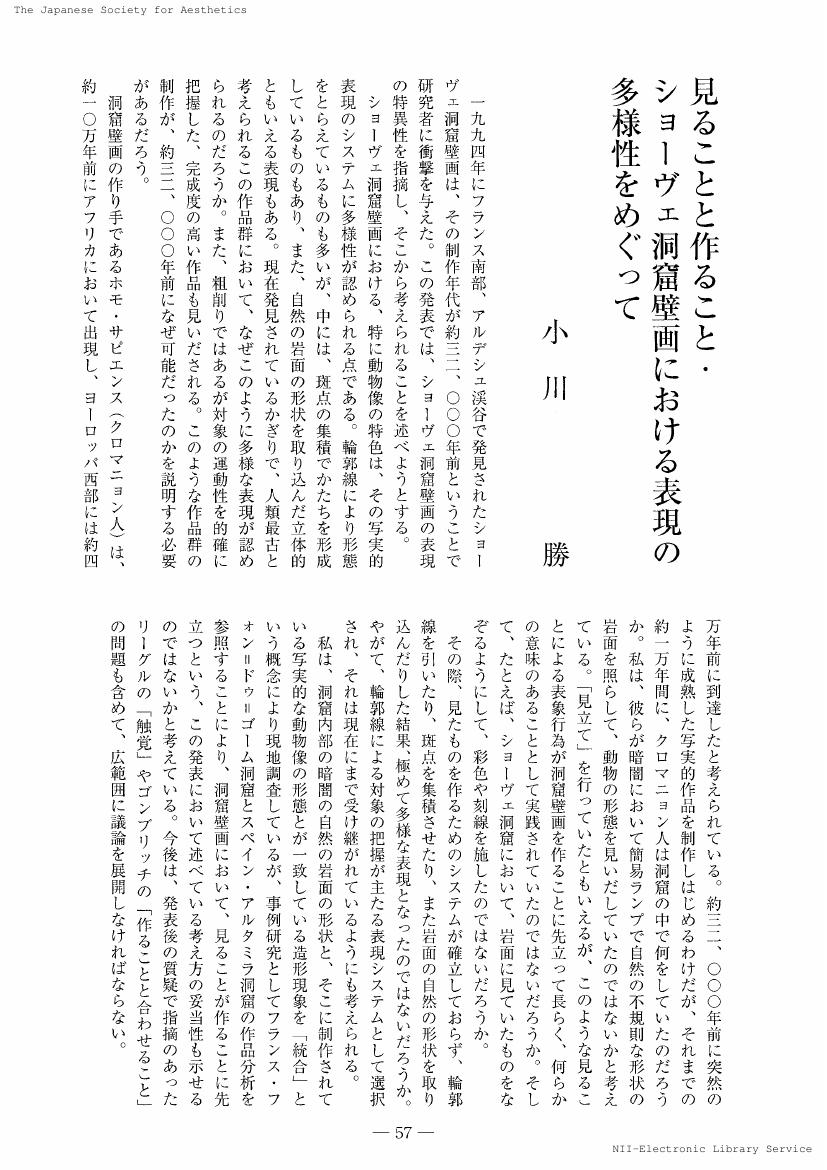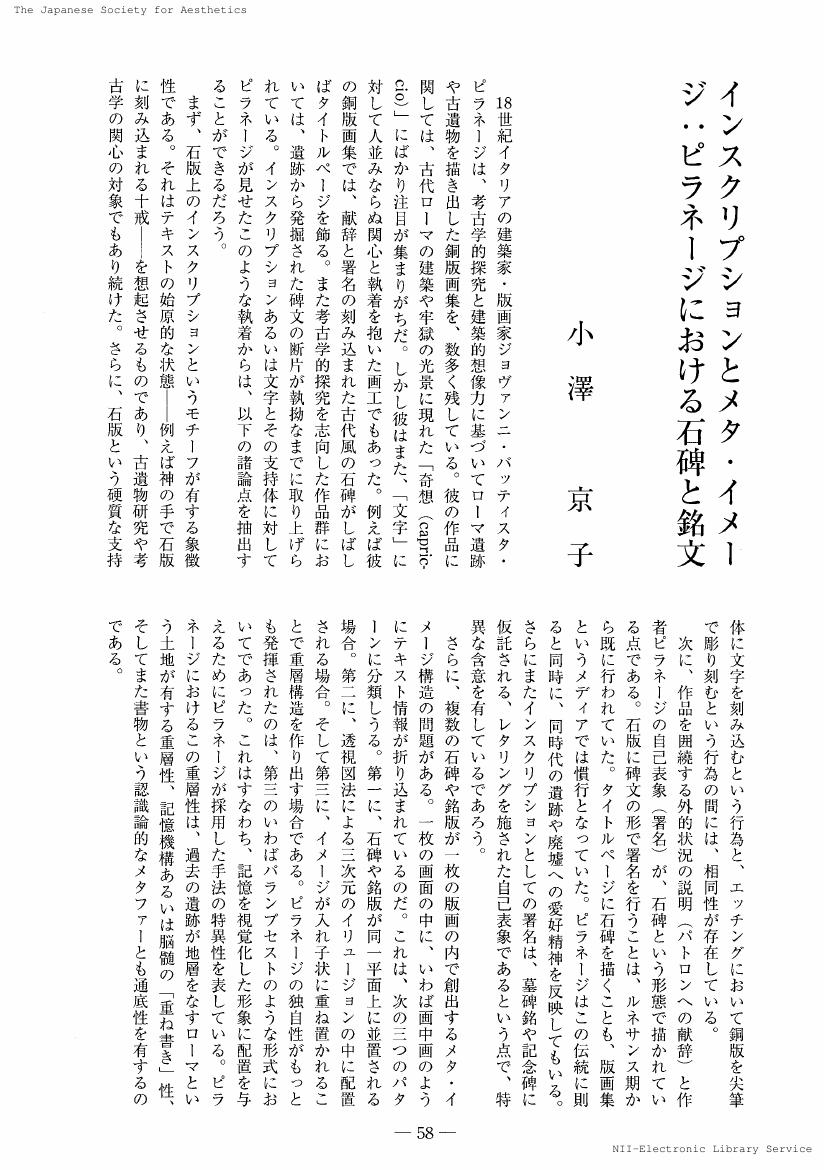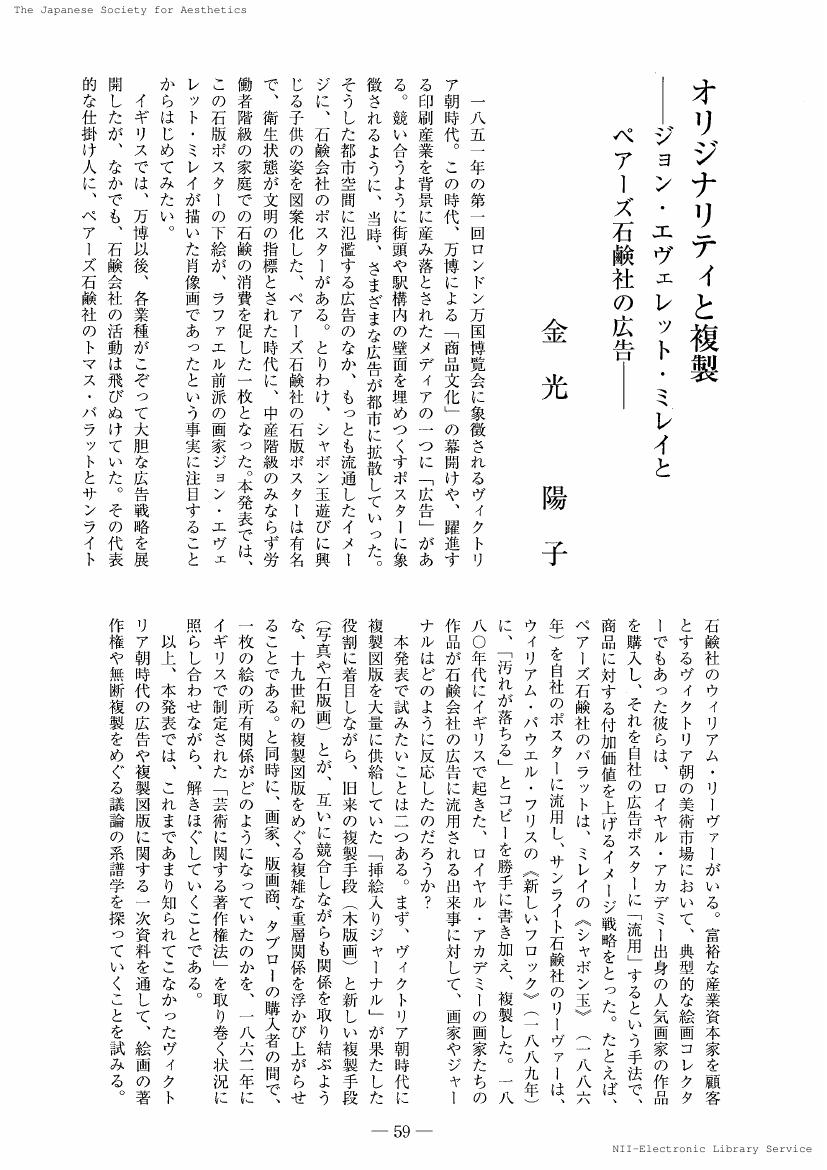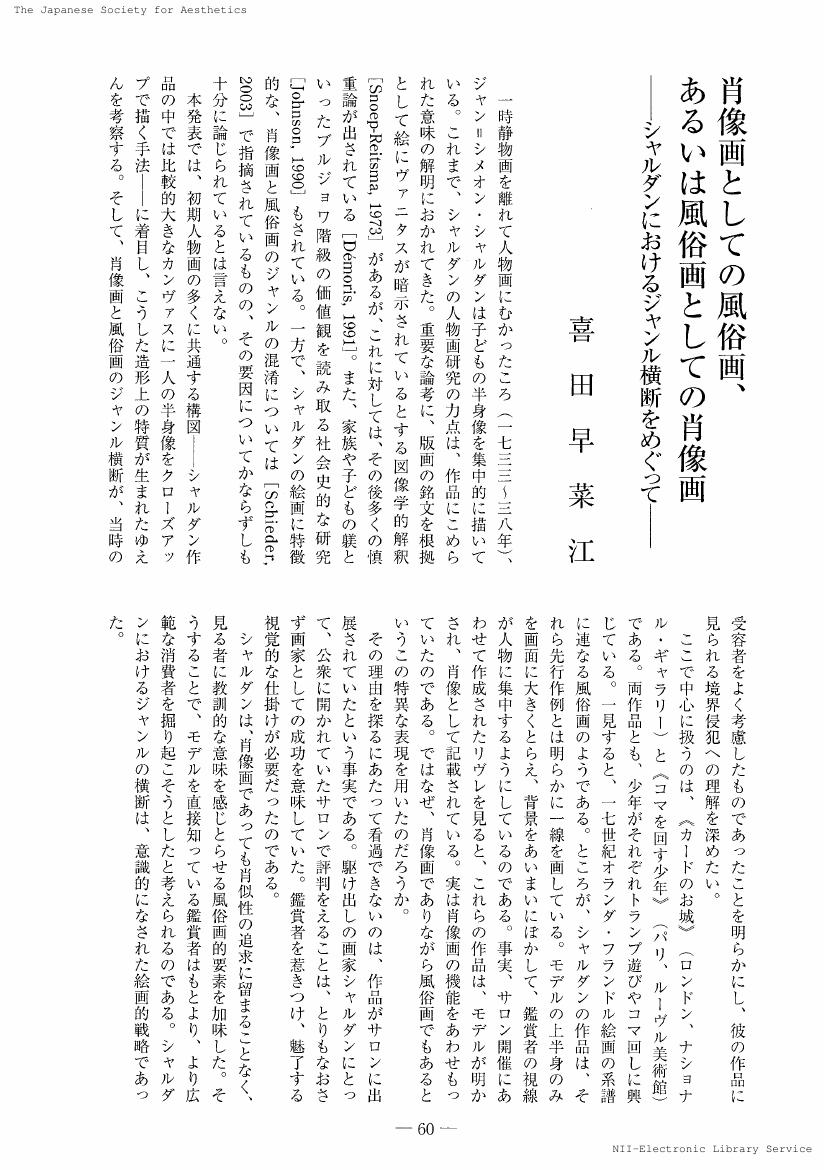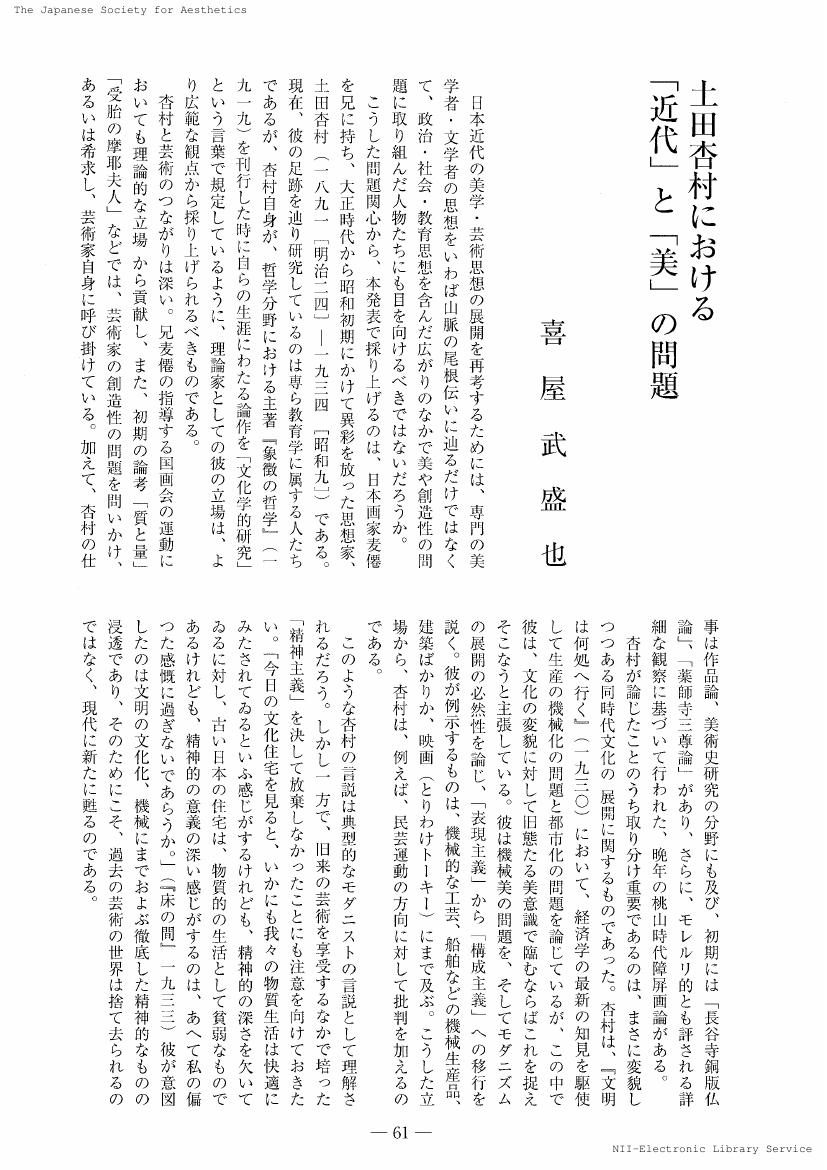1 0 0 0 OA コリングウッドにおける芸術の社会的役割(第五十六回美学会全国大会発表要旨)
- 著者
- 小林 千夏
- 出版者
- 美学会
- 雑誌
- 美学 (ISSN:05200962)
- 巻号頁・発行日
- vol.56, no.3, pp.64, 2005-12-31 (Released:2017-05-22)
- 著者
- 酒井 健太郎
- 出版者
- 美学会
- 雑誌
- 美学 (ISSN:05200962)
- 巻号頁・発行日
- vol.56, no.3, pp.65, 2005-12-31 (Released:2017-05-22)
- 著者
- 酒井 健宏
- 出版者
- 美学会
- 雑誌
- 美学 (ISSN:05200962)
- 巻号頁・発行日
- vol.56, no.3, pp.66, 2005-12-31 (Released:2017-05-22)
1 0 0 0 OA 世界への感性的繋留(第五十六回美学会全国大会発表要旨)
- 著者
- 佐々木 健一
- 出版者
- 美学会
- 雑誌
- 美学 (ISSN:05200962)
- 巻号頁・発行日
- vol.56, no.3, pp.67, 2005-12-31 (Released:2017-05-22)
1 0 0 0 OA ジゼール・ブルレにおける音楽の連続性・統一性(第五十六回美学会全国大会発表要旨)
- 著者
- 佐藤 真紀
- 出版者
- 美学会
- 雑誌
- 美学 (ISSN:05200962)
- 巻号頁・発行日
- vol.56, no.3, pp.68, 2005-12-31 (Released:2017-05-22)
- 著者
- 篠木 涼
- 出版者
- 美学会
- 雑誌
- 美学 (ISSN:05200962)
- 巻号頁・発行日
- vol.56, no.3, pp.69, 2005-12-31 (Released:2017-05-22)
- 著者
- 渋谷 拓
- 出版者
- 美学会
- 雑誌
- 美学 (ISSN:05200962)
- 巻号頁・発行日
- vol.56, no.3, pp.70, 2005-12-31 (Released:2017-05-22)
- 著者
- 一條 和彦
- 出版者
- 美学会
- 雑誌
- 美学 (ISSN:05200962)
- 巻号頁・発行日
- vol.56, no.3, pp.52, 2005-12-31 (Released:2017-05-22)
- 著者
- 入江 繁樹
- 出版者
- 美学会
- 雑誌
- 美学 (ISSN:05200962)
- 巻号頁・発行日
- vol.56, no.3, pp.53, 2005-12-31 (Released:2017-05-22)
- 著者
- 植田 彩芳子
- 出版者
- 美学会
- 雑誌
- 美学 (ISSN:05200962)
- 巻号頁・発行日
- vol.56, no.3, pp.54, 2005-12-31 (Released:2017-05-22)
1 0 0 0 OA 写真のプレ現象 : その受容における3つの時間(第五十六回美学会全国大会発表要旨)
- 著者
- 内野 博子
- 出版者
- 美学会
- 雑誌
- 美学 (ISSN:05200962)
- 巻号頁・発行日
- vol.56, no.3, pp.55, 2005-12-31 (Released:2017-05-22)
- 著者
- 大石 和久
- 出版者
- 美学会
- 雑誌
- 美学 (ISSN:05200962)
- 巻号頁・発行日
- vol.56, no.3, pp.56, 2005-12-31 (Released:2017-05-22)
- 著者
- 小川 勝
- 出版者
- 美学会
- 雑誌
- 美学 (ISSN:05200962)
- 巻号頁・発行日
- vol.56, no.3, pp.57, 2005-12-31 (Released:2017-05-22)
- 著者
- 小澤 京子
- 出版者
- 美学会
- 雑誌
- 美学 (ISSN:05200962)
- 巻号頁・発行日
- vol.56, no.3, pp.58, 2005-12-31 (Released:2017-05-22)
- 著者
- 金光 陽子
- 出版者
- 美学会
- 雑誌
- 美学 (ISSN:05200962)
- 巻号頁・発行日
- vol.56, no.3, pp.59, 2005-12-31 (Released:2017-05-22)
- 著者
- 喜田 早菜江
- 出版者
- 美学会
- 雑誌
- 美学 (ISSN:05200962)
- 巻号頁・発行日
- vol.56, no.3, pp.60, 2005-12-31 (Released:2017-05-22)
1 0 0 0 OA 土田杏村における「近代」と「美」の問題(第五十六回美学会全国大会発表要旨)
- 著者
- 喜屋武 盛也
- 出版者
- 美学会
- 雑誌
- 美学 (ISSN:05200962)
- 巻号頁・発行日
- vol.56, no.3, pp.61, 2005-12-31 (Released:2017-05-22)
1 0 0 0 OA バレエにおけるtempsの概念
- 著者
- 譲原 晶子
- 出版者
- 美学会
- 雑誌
- 美学 (ISSN:05200962)
- 巻号頁・発行日
- vol.56, no.2, pp.55-68, 2005-09-30 (Released:2017-05-22)
The concept 'temps' as ballet terminology was born with the birth of danse classique in the 17th century, following the concept of the same term established in the music theory in the same period. The term, which denotes a unit of dance movement basically, had been re-defined repeatedly through ballet history, especially in relation to the concept 'pas'. However, in current ballet theories traditional ideas of 'temps' seem to have disappeared, and the term can be seen only in names of some ballet steps. Why did the concept emerge in the ballet, how was it understood in the different periods of the ballet history and why did it become unused? To answer these questions I, at first, traced the original idea of this term in the music. Then I examined the various definitions of 'temps' and usages of this term found in main dance books since the 17th century. Viewing over transformations of ballet steps under the influence of the concept 'temps' through ballet history, it can be noticed that, though the concept is no more used in the theory today, it remains alive practically in actual ballet movements.
1 0 0 0 OA バロック音楽の演奏習慣に、舞踏身体のリズム特性を読む : 不等音符奏法の場合
- 著者
- 赤塚 健太郎
- 出版者
- 美学会
- 雑誌
- 美学 (ISSN:05200962)
- 巻号頁・発行日
- vol.56, no.2, pp.69-82, 2005-09-30 (Released:2017-05-22)
In the baroque period, the body of French courtiers was educated in dance lessons. Therefore the most basic motion in the dance of that time, which was called mouvement, dominated rhythmic character of their bodies. Mouvement is a bending of the knees followed by a rise of the body and a straightening of the knees. The energy of the rise from the sink stresses the measure, but these motions are executed quite fluently and have no instant that divide time into beats. Because of these characters, the dancer count beats upward. Music has to cooperate with this bodily feeling in some ways, and notes inegales is one of them. Notes inegales is a convention in which notes with equal written values are performed with alternation of long and short durations. This convention has some characters in common with mouvement. For example, it conceals gaps between beats and makes the performance more graceful. Still more, the duration of the sound has great importance under this convention. Experience of this duration requires concentration on the progress of the sound. Here it builds up the mutual relationship with the rhythmic character of the body.
1 0 0 0 OA ニーチェにおける<幻視>の概念 : 芸術経験における視覚と身体
- 著者
- 河合 大介
- 出版者
- 美学会
- 雑誌
- 美学 (ISSN:05200962)
- 巻号頁・発行日
- vol.56, no.3, pp.1-14, 2005-12-31 (Released:2017-05-22)
After the "Death of Painting," the role of vision in the experience of art has changed entirely. The privilege of visuality in modernism has been superseded by a minimalist visuality, which contains in itself the relation between the beholder and the work. In this light, Nietzsche's concept of Vision (the German word meaning "vision" or "hallucination") assumes a different aspect. In The Birth of Tragedy, Apollonian art is attributed to the dream in which we look away from sufferings in real life, and become absorbed in contemplation of an imaginary world. In tragedy, however, the Apollonian operation is called Vision in distinction from the dream. The intoxicated spectator transfigures actors on the stage into gods and acquires an insight into the Dionysian origin of the world. In his later work Twilight of the Idols, in which Vision as an intoxication of the eye replaces the dream, Apollonian art as well as music arouses intoxication. A transfiguration results from this, with the eyes open. Therefore, Vision is a sort of visuality that exists as a physical relation between the beholder and the work. This concept of Vision provides a new perspective on both Nietzsche's theory of art and contemporary art.





